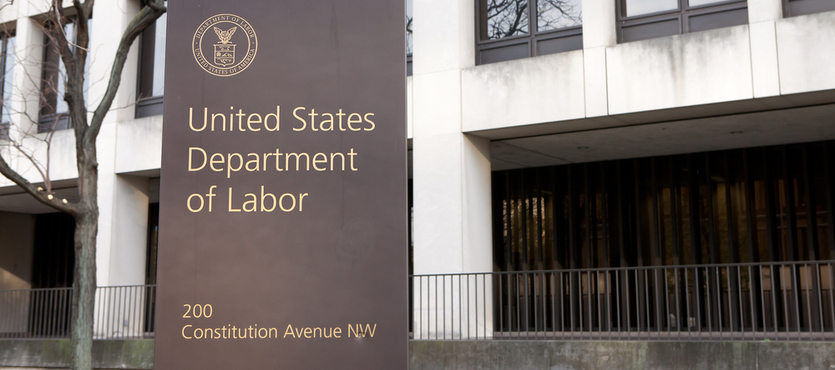In a significant development for former Iraq contractors, an administrative law judge from the Department of Labor, which administers the Defense Base Act, ruled that there is a link between burn pits and lung disease.
In a well-reasoned, 19-page decision, ALJ Christopher Larsen considered the claim of Specialist Veronica Landry. Between 2004 and 2005, she worked for a KBR division as a MWR (Morale, Welfare, and Recreation) specialist in Mosul. She testified that she worked close to a large burn pit “every day.” “They were just throwing all the hazmat stuff in there [including] ammunition. We spent hours in the bunker at a time because there was ammunition just going off everywhere,” she added. After returning home, she sporadically experienced lung disease symptoms, like trouble breathing and coughing, for over a decade.
Finally, in 2016, a doctor diagnosed Spclst. Landry with deployment-related lung disease. Dr. Silpa Krefft, of Denver’s National Jewish Health Center, attributed this condition to a combination of dust exposure, outdoor work, and burn pit exposure. Since Mosul is in the mountains where dust storms were not a problem, and Spclst. Landry worked inside most of the time, the cause was “more burn pits,” according to the court’s decision.
ALJ Larsen accepted that medical diagnosis but concluded that, based on the evidence, Spclst. Landry did not suffer from a “disabling” medical condition. Specifically, he noted that Dr. Krefft said the DRLD was “mild” and that Spclst. Landry nowhere testified that her lung disease prevented her from working as a contractor.
The Connection Between Iraqi Burn Pits and Serious Injury
Although the ALJ denied the underlying claim, this finding that burn pits caused the victim’s lung disease “as a matter of law” is truly groundbreaking. Even though it does not come from an appeals court, this decision is arguably binding on any future Defense Base Act matter. The Department of Labor oversees the Division of Longshore and Harbor Workers’ Compensation, which administers the DBA.
Although officials strongly discouraged their use, burn pits were widely used in both Iraq and Afghanistan. The large contingents of American troops and private military contractors stationed in these countries at the heights of their respective wars generated huge quantities of trash, from plastic water bottles to worn-out tires to medical waste. Burn pits were just that. They were large holes in the ground where all this refuse was dumped, doused with jet fuel, and set on fire. At most of the large installations, these pits burned 24/7/365. The result was often a landscape that looked like the Kuwaiti oil field fires, which Iraqi strongman Saddam Hussein ordered set at the end of the Gulf War in 1991.
These fires may have been at least partly responsible for the amorphous Gulf War Disease which has sickened or killed many veterans. The same is arguably true of burn pits in the War on Terror, whose victims may include Army Maj. Beau Biden, the son of the former Vice-President.
An extensive Institute of Medicine (IOM) study in 2011, which centered on the notorious burn pit at Joint Base Balad (a/k/a Camp Anaconda and Mortaritaville). The IOM found a link between burn pit exposure and:
- Liver disease,
- Neurological disorders,
- Stomach, skin, and blood cancer,
- Severe anemia,
- Respiratory dysfunction.
- Kidney disease,
- Reproductive problems, and
- Cardiovascular disease.
Most of these issues stem from the large amounts of poisons in burn pit smoke, including polyaromatic hydrocarbon (PAH), volatile organic compound (VOC), polychlorinated dibenzo-p-dioxin and dibenzo-p-furan (PCDD/F), and particulate matter.
Common Issues in the Fight for Fair Compensation
Typically, Defense Base Act benefits include money for lost wages and medical expenses. These benefits are available to injured contractors who served overseas in a war zone. A “war zone” is not just a place where bullets are flying. The phrase includes any country that has at least one U.S. military base. Furthermore, the victim must establish a connection between the injury and the services provided.
The insurance company does not simply give away these benefits. Their lawyers often employ a variety of defenses to reduce or deny compensation to victims.
Many occupational diseases, such as Deployment-Related Lung Disease, involve a pre-existing or aggravating condition. In the above-described case, outdoor work and dust exposure contributed to Spclst. Landry’s DRLD. However, since the burn pits mostly caused her illness, the ALJ correctly noted that the burn pits caused it “as a matter of law.” Generally, as long as a unique work-related condition is the leading cause of an occupational disease, full benefits are available.
A legal doctrine called the discovery rule sometimes comes into play as well. The duty to report the condition does not arise when symptoms first appear. Instead, victims must file DBA initial reports when they connect their symptoms to a work-related injury. Insurance companies often insist that the victim waited too late to file a claim, so attorneys must be ready to respond to this point.
To learn more about the Defense Base Act process, contact Barnett, Lerner, Karsen & Frankel, P.A.

